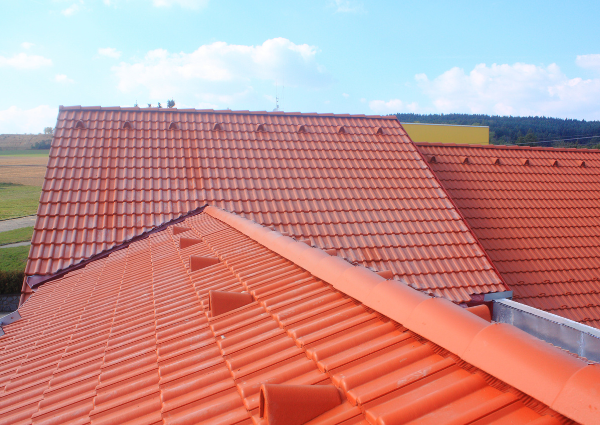Welcome to our comprehensive guide to different types of roofing materials available in the market. As professional copywriting journalists, we understand that the decision to install a new roof or replace an existing one can be daunting. That’s why we have created this guide to help you make an informed decision.
Every roofing material has its pros and cons, and understanding these can help you decide which material is best suited for your needs. Whether you prioritize cost, durability, or aesthetic appearance, we have the information you need to choose the perfect roofing material.
Key Takeaways
- Understanding the different types of roofing materials can help you make an informed decision when selecting the right material for your roof.
- Factors such as climate, budget, and aesthetic preferences should be considered when selecting a roofing material.
- Consulting with a professional roofer can help assess your specific needs and requirements before making a final choice.
- Popular roofing materials include asphalt shingles, metal roofs, clay tiles, and slate roofs.
- Evaluating the characteristics, durability, and cost factors associated with each option can help you make an informed decision.
Popular Roofing Materials
When it comes to choosing the right roofing material for your home, there are a number of options to consider. From classic materials like asphalt shingles and clay tiles to more modern options like metal roofs and slate roofs, each material has its own unique set of advantages and disadvantages.
Asphalt Shingles
Asphalt shingles are one of the most popular roofing materials on the market. They are affordable, durable, and come in a wide range of colors and styles. While they are not as long-lasting as some other materials, they are relatively easy to install and repair, making them a great choice for homeowners on a budget.
Metal Roofs
Metal roofs have become increasingly popular in recent years, thanks to their modern aesthetic and long-lasting durability. They are typically made from steel, aluminum, or copper, and are available in a variety of colors and finishes. While they can be more expensive than other materials, they require less maintenance and can last up to 50 years or more, making them a great investment for many homeowners.
Clay Tiles
Clay tiles are a classic roofing material that have been used for centuries. They are available in a variety of colors and styles, and have a distinctive look that can add character and charm to any home. While they are relatively expensive and heavy, they are also incredibly durable and can last up to 100 years or more when properly maintained.
Slate Roofs
Slate roofs are another classic option that are known for their beauty and durability. They are made from natural slate, which is a type of rock that is quarried and cut into tiles. Slate roofs are extremely long-lasting, with some roofs lasting up to 200 years or more. However, they are also one of the most expensive roofing materials available, and can be difficult to install and repair.
Overall, when choosing a roofing material, it’s important to consider factors such as budget, durability, and aesthetic preferences. Each material has its own advantages and disadvantages, and understanding these will help you make an informed decision. If you’re not sure which material is right for your home, consult with a professional roofer to assess your specific needs and requirements.
Conclusion
Now that we’ve explored the various types of roofing materials, it’s important to consider several factors when choosing the right material for your roof. Climate, budget, and aesthetic preferences are all important considerations that will ultimately help you make an informed decision.
Remember, each roofing material has its own advantages and disadvantages. For example, asphalt shingles are a cost-effective and easy-to-install option, while metal roofs are durable and energy-efficient. Clay tiles offer a classic aesthetic and are highly durable, while slate roofs are known for their longevity and durability.
When making your final decision, don’t forget to consult with a professional roofer. They will be able to assess your specific needs and requirements to help you choose the best material for your roof.
Ultimately, choosing the right roofing material is an investment in the long-term protection and value of your home. By considering the factors mentioned above and consulting with a professional, you’ll be able to select a roofing material that is perfect for your needs and budget.
FAQ
What are the different types of roofing materials?
There are several types of roofing materials available, including asphalt shingles, metal roofs, clay tiles, and slate roofs. Each material has its own unique characteristics and advantages.
How do I choose the right roofing material for my roof?
When choosing a roofing material, it’s important to consider factors such as climate, budget, and aesthetic preferences. Consulting with a professional roofer can help assess your specific needs and requirements.
What are the advantages and disadvantages of asphalt shingles?
Asphalt shingles are a popular choice due to their cost-effectiveness, versatility, and easy installation. However, they may have a shorter lifespan compared to other materials and may not be as durable in extreme weather conditions.
Are metal roofs a good option?
Metal roofs offer durability, longevity, and energy efficiency. They are resistant to fire, rot, and insects, making them a great choice for many homeowners. However, they can be more expensive upfront and may require professional installation.
What about clay tiles?
Clay tiles are known for their aesthetic appeal and durability. They can withstand high temperatures and are resistant to rot and insects. However, they can be heavier and more expensive compared to other materials.
Are slate roofs a practical choice?
Slate roofs are highly durable, long-lasting, and fire-resistant. They offer a unique and elegant appearance. However, they can be quite expensive and require professional installation due to their weight.
Should I consider other factors besides the material itself?
Yes, factors such as climate, budget, and aesthetic preferences should also be considered when selecting a roofing material. Consulting with a professional roofer can help you make an informed decision based on your specific needs.
How can I ensure the longevity of my chosen roofing material?
Regular maintenance and inspections are crucial for ensuring the longevity of your roof. Following manufacturer guidelines, addressing any issues promptly, and scheduling professional inspections can help identify and resolve any potential problems.
Can I install a new roof myself?
While some homeowners may have the skills to install a new roof themselves, it’s generally recommended to hire a professional roofer. They have the experience, knowledge, and equipment necessary to ensure a proper installation that meets building codes and industry standards.
How often should I replace my roof?
The lifespan of a roof depends on several factors, such as the material used, the climate, and the quality of installation. On average, a roof may need to be replaced every 20-25 years, but regular maintenance and inspections can help prolong its lifespan.





